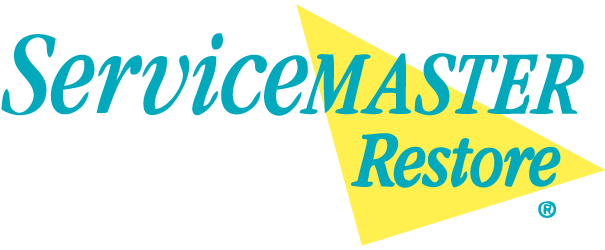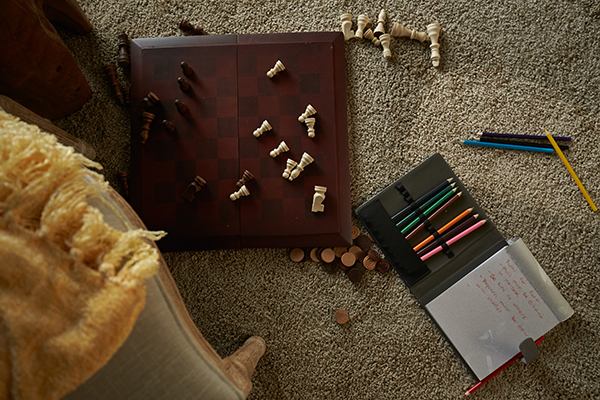Smoke and soot are byproducts of a fire. Even though the initial flames are extinguished, the danger to the property and its occupants is not completely wiped out. Pervasive and stealthy, smoke and soot damage can spread even after the fire is put out and destroy the home.
What is smoke damage?
Smoke covers materials inside a home that has been engulfed in fire. Physical damage results from layers of smoke and is known as smoke damage (smoke damage is distinct from fire damage). While fire damages items by consuming them, smoke damages possessions by coating them in soot.
Incomplete combustion, whereby a lack of oxygen causes materials to inadequately burn, results in smoke. The accumulation of these tiny, unburnt particles creates smoke. Individual smoke particles are too small to see until they come together and form clouds of smoke.
Any of three different types of smoke may develop. Burned plastic and rubber produce wet smoke; its stickiness makes it difficult to clean. Fast burning paper and wood can produce dry smoke. Protein fire residue is created by the evaporation of material rather than the fire itself.
What is soot damage?

Similar to smoke, soot forms out of the incomplete combustion of materials
Similar to smoke, soot forms out of the incomplete combustion of materials. What results is a fine, sticky black powder. Soot particles consist of a range of chemicals, but its composition is determined by the type of fuel being burned. Black carbon is a major component of soot.
Soot is a type of particle pollution that is 2.5 micrometers in diameter or smaller. The size of soot particles is smaller than that of dust, dirt, and mold particles. Since soot particles are extremely tiny, people can easily inhale them and develop respiratory issues.
House fires can create soot when organic and synthetic materials burn. However, properties that have not undergone a fire can also develop soot damage. Burning materials containing hydrocarbon creates soot, meaning fireplaces, candles, tobacco smoke and high cooking temperatures can produce soot.
How do smoke and soot travel?
Smoke particles are highly pervasive. Given its ability to travel far from the fire’s place of origin, smoke can travel into HVAC vents, behind walls, within light fixtures, inside electrical sockets and into household furnishings—and result in significant smoke damage.
Smoke tends to seek cooler areas of the home and will utilize pipes, wiring, ducts, and crevices to reach those places. Consequently, smoke damage will end up in concealed areas. As smoke particles rapidly cool, they leave behind offensive odors and cause ruinous effects.
- Smoky Odors
Smoke odor is a result of smoke particles settling into furnishings, carpeting, or other fabrics. Porous materials absorb the smoke particles and expel the foul smell of smoke. Spraying air freshener temporarily lifts the odors but does not fully eliminate them.
Cleaning surfaces, laundering items and deodorizing carpets are effective ways to rid the property of smoke smells. Professionally clean the HVAC unit to dislodge smoke and soot residue. Set bowls of vinegar throughout the home for several days to absorb the lingering smells of smoke.
- Stained Walls
Failing to promptly and properly clean smoke and soot can result in permanently discolored walls. Staining usually occurs when smoke and soot particles come into contact with the walls and floors. Discoloration is not immediate and may occur a few days after the fire.
Smoke-stained walls may be cleaned with a dry-cleaning sponge. Be careful to wipe the walls, not scrub, as the latter spreads the soot. After removing the soot with the dry-cleaning sponge, wipe the walls with a commercial degreaser (or use vinegar or degreasing dish soap in hot water).
- Damaged Electronics
Smoke particles can meander into electronic equipment and appliances and damage sensitive components. Damage is often cumulative. This means the technology may work immediately after the fire, but short circuiting can eventually occur as smoke chemicals accumulate on fragile circuits.
Electronics and appliances become ruined when the chemical components found in smoke act as conductors that disrupt the circuit board’s electrical pathways. Wipe away exterior soot and follow with an air compressor to blow away soot particles. A professional cleaning may be necessary.
- Corrosion
Metal parts can corrode when exposed to smoke and acidic soot residue. HVAC systems are built with metal parts, making it especially concerning when soot particles enter them. The HVAC unit can consequently malfunction or start a house fire. Soot also causes permanent etching to surfaces.
Metal appliances that show visual corrosion should be inspected by a professional prior to use. Hiring a professional to clean the HVAC unit will ensure the unit does not recirculate smoky air when it is turned on. Also change the air filters on the HVAC system.
Smoke and soot damage affect the home in numerous ways, many of which are hidden. Proper cleaning requires taking precautions to prevent soot particles from entering the lungs, adequate ventilation and protecting the floor to keep from tracking soot particles into other rooms.
ServiceMaster S&R Systems are quick to respond to fire and smoke damage emergencies. Our experienced specialists understand the speed at which smoke particles spread, so we arrive onsite promptly after your call. Fire damage mitigation is a lengthy process, and we handle every step.
Our skilled fire damage restoration technicians pre-clean for smoke and soot, remove soot and smoke stains from walls and ceilings, provide content cleaning and pack out services, deodorize the property, provide reconstruction services, and assist homeowners with filing insurance claims.
Water from fire hoses may have extinguished the fire, leading to water damage and a possible mold infestation. ServiceMaster S&R is prepared to restore your water, fire, and mold damaged property to its pre-loss condition fast. Homeowners can turn to us for comprehensive restoration services.
ServiceMaster S&R dispatches restoration crews with speed. Call us when you experience a fire and smoke damage cleanup emergency. We are available to serve the immediate needs of homeowners living in the surrounding communities of Kane, Kendall, and Will counties in Illinois.

